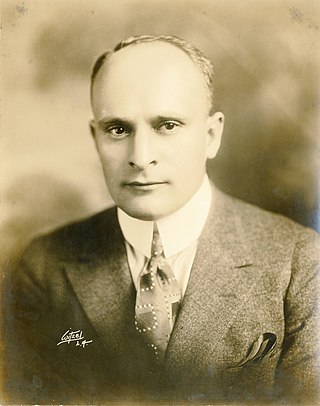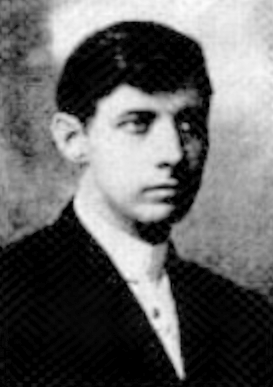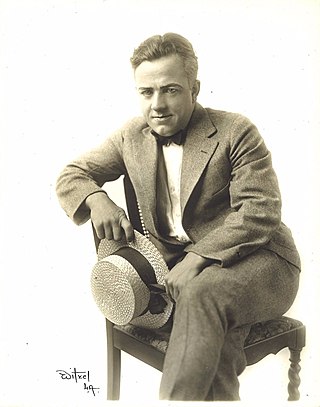Related Research Articles


The Selig Polyscope Company was an American motion picture company that was founded in 1896 by William Selig in Chicago, Illinois. The company produced hundreds of early, widely distributed commercial moving pictures, including the first films starring Tom Mix, Harold Lloyd, Colleen Moore, and Roscoe "Fatty" Arbuckle. Selig Polyscope also established Southern California's first permanent movie studio, in the historic Edendale district of Los Angeles.

Antonio Garrido Monteagudo, better known as Antonio Moreno or Tony Moreno, was a Spanish-born American actor and film director of the silent film era and through the 1950s.

Mary Claire Fuller was an American actress active in both stage and silent films. She also was a screenwriter and had several films produced. An early major star, by 1917 she could no longer gain roles in film or on stage. A later effort to revive her career in Hollywood failed in the 1920s after talkies began to dominate film. After suffering a nervous breakdown, she was admitted to St. Elizabeths Hospital in Washington, DC in 1947 and lived there until her death.

Frank Powell was a Canadian-born stage and silent film actor, director, producer, and screenwriter who worked predominantly in the United States. He is also credited with "discovering" Theda Bara and casting her in a starring role in the 1915 release A Fool There Was. Her performance in that production, under Powell's direction, quickly earned Bara widespread fame as the film industry's most popular evil seductress or on-screen "vamp".

William Davis Garwood, Jr. was an American stage and film actor and director of the early silent film era in the 1910s.

Charles Gardner Sullivan was an American screenwriter and film producer. He was a prolific writer with more than 350 films among his credits. In 1924, the magazine Story World selected him on a list of the ten individuals who had contributed the most to the advancement of the motion picture industry from its inception forward. Four of Sullivan's films, The Italian (1915), Civilization (1916), Hell's Hinges (1916), and All Quiet on the Western Front (1930), have been listed in the National Film Registry.

The Restless Spirit is a 1913 American silent short drama film written and directed by Allan Dwan, featuring J. Warren Kerrigan, Lon Chaney, and Pauline Bush. The film is based on Thomas Gray's 1751 poem, Elegy Written in a Country Churchyard, and tells the story of a man who wishes to be a conqueror. A series of illusions follows which show him the futility of conquest when he cannot even conquer his own community.

The American Film Manufacturing Company, also known as Flying “A” Studios, was an American motion picture production company. In 1915, the formal name was changed to the American Film Company.

Homer A. Scott was a founding member of the American Society of Cinematographers (A.S.C.) and was their president from 1925-1926. He was also a member and director of its predecessor organization, The Static Club of America.

Shorty Hamilton was an American actor and silent film comedian who appeared in more than 80 films, mostly westerns, from 1909 to 1925. His birth name was William John Schroeder, and he was also known as "Jack Hamilton." He had served in the United States Cavalry for several years and worked as a cowboy in Montana and Texas. He was best known for the "Adventures of Shorty" series of two-reel silent films that were released from 1912 to 1917.

William J. Bowman was an American stage and film actor, writer, and director noted for his work in the early 1900s on silent productions for studios in New York, New Jersey, Chicago, and in Los Angeles during the first decade of filmmaking in and around Hollywood. His direction of a series of films with matinee idol Francis X. Bushman in 1915 and his direction of the serials The Invisible Hand in 1920 and The Avenging Arrow in 1921 form only a small part of Bowman's extensive filmography.
Edward Alfred Harrison, known as E. A. Harrison, was an American architect who worked as a staff architect for the Atchison, Topeka & Santa Fe Railway, with offices in Topeka, Kansas, and later in Chicago, Illinois.
Barry O'Neil was a film director and writer. His real name was Thomas J. McCarthy. He directed several Thanhouser films including the production company's first two-reeler, Romeo and Juliet. He went on to work for Lubin and then World Film Corporation.
Milton J. Fahrney, sometimes credited as Milton H. Fahrney or simply Milton Fahrney, was an actor and director during the silent film era.
Gilbert P. Hamilton was an American film company executive and director. He worked at Essanay as a cinematographer, headed the St. Louis Motion Picture Company, and then launched the Albuquerque Film Manufacturing Company.
The Dawson Film Find (DFF) was the accidental discovery in 1978 of 372 film titles preserved in 533 reels of silent-era nitrate films in the Klondike Gold Rush town of Dawson City, Yukon, Canada. The reels had been buried under an abandoned hockey rink in 1929 and included lost films of feature movies and newsreels. A construction excavation inadvertently uncovered the forgotten cache of discarded films, which were unintentionally preserved by the permafrost.
Edward Clisbee was an actor in silent films. His roles included recurring parts in several serials. He was a police chief in one series of two-reel films. He also portrayed Hunchback Charlie. He appeared in a film series based on Bronson Howard stories.

The Unattainable is a 1916 American Blank and White silent drama directed by Lloyd B. Carleton. The film is based on the story by Elwood D. Henning. The photoplay stars Dorothy Davenport and Emory Johnson.
Willis Lewis Robards (1873–1921) also known as Walter Edwards, was an American actor, film director, and film producer. He acted in stage, and in cinema during the silent film era. He is known for his work on the films When Shadows Fall (1916), Mothers of Men (1917), and The Three Musketeers (1921).
References
- ↑ "Silent Era : Progressive Silent Film List". www.silentera.com.
- ↑ Bowser, Eileen (1994). The Transformation of Cinema, 1907–1915. University of California Press. p. 213. ISBN 978-0-520-08534-3.
- ↑ Slide, Anthony (2014). The New Historical Dictionary of the American Film Industry. Taylor & Francis. p. 14. ISBN 978-1-135-92561-1.
- ↑ Langman, Larry (1992). A Guide to Silent Westerns. Greenwood Publishing Group. p. 25. ISBN 978-0-313-27858-7.
- 1 2 The Moving Picture World. Chalmers Publishing Company. 1913. p. 1156.
- ↑ "Tenth Cavalry Will Soon Appear in the "Movies"". El Paso Herald. 19 December 1913. p. 16. Retrieved 27 December 2013.
- ↑ "Mimic Battle is Staged for "Movies"". El Paso Herald. 19 December 1913. p. 2. Retrieved 27 December 2013.
- ↑ "A New Type of "Westerns"". Motion Picture News . 14 February 1914. p. 22. Retrieved 26 December 2013.
- ↑ Santa Fe Trail Magazine. Vol. 1. Santa Fe Publishing Company. 1913. pp. 91–92.
- ↑ Standard Corporation Service, Daily Revised. Standard Statistics Company, Incorporated. 1915. p. 3.
- ↑ "The Lust of the Red Man – 1914". Filmweb.no.
- ↑ Epting, Charles (2018-08-25). "No More Tears Over Lost Films". The Silent Film Quarterly. Retrieved 2019-10-03.
- ↑ "Soul mates / Albuquerque Film Manufacturing Company". Library of Congress. LCCN 93517170.
- ↑ "Soul mates". Worldcat. October 3, 1924. OCLC 29752307.